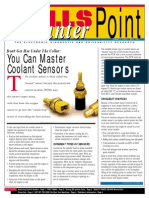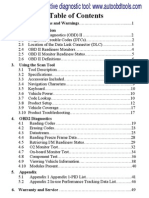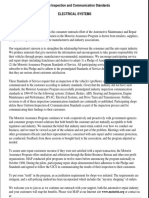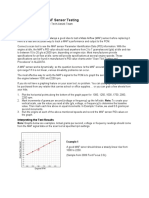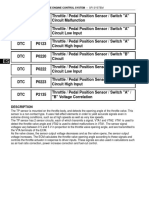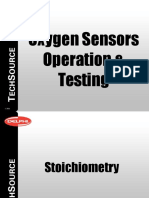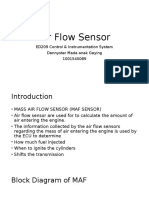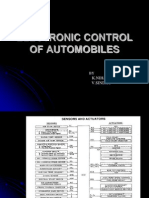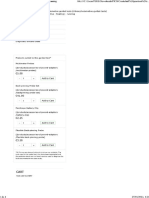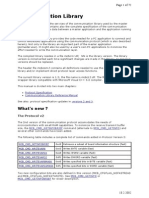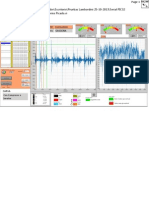Home (/) / Library (/library) / Automotive guided tests (/library/automotive-guided-tests)
/ Camshaft sensor - Hall effect
How to perform the test
Example waveform
Waveform notes
Waveform Library
Further guidance
Diagnostic trouble codes
Products suited to this guided test*
Multimeter Probes
(/products/accessories-clips-and-adaptors
/multimeter-probes)
€5.00
Add to Cart
�Camshaft sensor - Hall effect file:///C:/Users/PERE/Downloads/PICO/Camshaft%20sensor%20-%...
How to perform the test
View connection guidance notes (https://www.picoauto.com/library/automotive-guided-tests/connection-guidance).
1. Use manufacturer’s data to identify the camshaft sensor output signal circuit.
2. Connect PicoScope Channel A to the circuit.
3. Minimize the help page. You will see that PicoScope has displayed an example waveform and is preset to
capture your waveform.
4. Start the scope to see live data.
5. Start the engine and run at idle.
6. With your waveforms on screen stop the scope.
7. Turn off the engine.
8. Use the Waveform Buffer, Zoom and Measurements tools to examine your waveform.
Example waveform
(/images/uploads/agt/_lrg/gt061-example-waveform-01.png)
Waveform notes
This known good waveform has the following characteristics:
A digital signal switching from a low voltage, just above 0 V, to a high voltage, just below 5 V.
Clean transitions between the two, stable, voltage levels.
No excessive hash or intermittent signal dropouts.
The relative periods between the high and low voltages indicate the phases of the camshaft’s rotation with
respect to the cylinder firing order.
The overall waveform frequency will increase with increasing engine speed.
Waveform Library
Go to the drop-down menu bar at the lower left corner of the Waveform Library window and select, Camshaft
sensor (Hall effect).
(/images/uploads/agt/_lrg/gt061-waveform-library-examples-01.png)
Further guidance
A CMP sensor signals one or more fixed camshaft reference positions to the Engine Control Module (ECM), for
example, the arrival of a cylinder’s intake stroke. The ECM uses the camshaft sensor signal for accurate timing
control of ignition (if a gasoline engine), injection, and variable valve phasing, etc.
As their name implies, Hall effect CMP sensors use the Hall effect, which produces a potential difference (known as
the Hall voltage) across the width of a conductor, when it has a current flowing through its length and a magnetic
field is applied perpendicular to the current (i.e. through the bottom-top direction of the conductor). When the
current is fixed, the greater the magnetic field strength, the greater the Hall effect voltage.
The sensors have in-built conditioning circuits that convert the Hall voltage to a stable digital signal output
switching between 0 V and 5 V. As they consume power, Hall effect CMP sensors require voltage feed and earth
circuits.
The sensors are accompanied by a pulse wheel. As the pulse wheel rotates, it passes through and disturbs the
sensor’s magnetic field to modulate the Hall voltage. In response, the digital sensor output switches either from low
to high (0 V to 5 V) or high to low (5 V to 0 V), depending on the sensor circuitry. The overall frequency of the
signal will depend on the camshaft speed.
The pulse wheel can have unique patterns for each cylinder, just a single pulse, or something in between. With
unique patterns for each cylinder, the CMP sensor signal can be used in a rapid start process. For example, a
4-cylinder engine can start within 180 degrees of crankshaft rotation (90 degrees of camshaft rotation). In these
applications, a CMP sensor may be referred to as a Cylinder Identification (CID) sensor or phase sensor and the
pulse wheel may be referred to as a phase wheel.
The CMP sensor signal can be critical to ECM operation and failures can cause symptoms such as:
2 de 4 25/01/2024, 10:46
�Camshaft sensor - Hall effect file:///C:/Users/PERE/Downloads/PICO/Camshaft%20sensor%20-%...
Engine cranking but not starting
Engine cutting out
Erratic running
Limp-home mode operation
Malfunction Indicator Lamp (MIL) illumination
Diagnostic Trouble Codes (DTCs)
Related failures are:
Shorts, opens or high resistances in the signal, feed or earth circuits.
Internal sensor circuit failures.
Signal errors resulting from excessive dirt or detritus on the sensor housing or pulse wheel.
Incorrect fitment or operation of the sensor or crankshaft components, causing:
Excessive gaps between the sensor and the pulse wheel.
Damage to the sensor housing or pulse wheel.
Excessive crank or flywheel movement or vibration.
Diagnostic trouble codes
Selection of component related Diagnostic Trouble Codes (DTCs):
P0340 : Camshaft Position Sensor A - Circuit Malfunction (Bank 1)
P0341 : Camshaft Position Sensor A - Circuit Range/Performance (Bank 1)
P0342 : Camshaft Position Sensor A - Circuit Low Input (Bank 1)
View more
GT061
Disclaimer
This help topic is subject to changes without notification. The information within is carefully checked and considered to
be correct. This information is an example of our investigations and findings and is not a definitive procedure. Pico
Technology accepts no responsibility for inaccuracies. Each vehicle may be different and require unique test settings.
Help us improve our tests
We know that our PicoScope users are clever and creative and we’d love to receive your ideas for improvement on
this test. Click the Add comment button to leave your feedback.
+ Add comment
Testimonials
The support I have received from Pico over the years has been superb. The regular software and driver updates are a real bonus.
— Shaun Lovelss
Product range (/products)
PicoScope Automotive news (/library/latest-news)
Waveform library (/library/waveform-library)
Find a distributor (/distributors)
Manuals & brochures (/library/documentation)
A to Z of PicoScope (/library/picoscope-in-depth)
Videos (/library/videos)
3 de 4 25/01/2024, 10:46
�Camshaft sensor - Hall effect file:///C:/Users/PERE/Downloads/PICO/Camshaft%20sensor%20-%...
Keep in touch...
Sign up and subscribe to our monthly newsletter (/library/newsletter/) and we’ll keep
you in the loop.
Sign up! (https://picotech.us13.list-manage.com/subscribe/post?u=f8f1e08332ca724b4d5d6afab&id=b7c56eaa50)
Automotive diagnostic scopes and equipment
4 de 4 25/01/2024, 10:46












